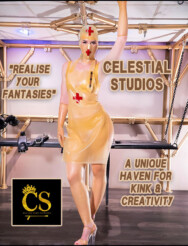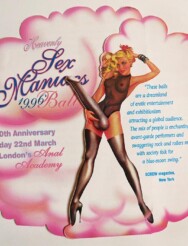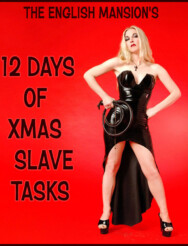 Phyllis Riding Aristotle – The Power of Women
Phyllis Riding Aristotle – The Power of Women
The story of Phyllis Riding Aristotle is not well-known today but throughout the late Middle Ages and into the European Renaissance (the 13th 14th, 15th & 16th centuries) it was a hugely popular fable. Left in its historical wake is a plethora of images of Phyllis astride the back of Aristotle, whip in hand. The bridled and saddled, famous Greek philosopher was painted on canvas; sculpted in stone; cast in bronze; carved into ivory; woven into tapestry; chiselled for woodcuts; etched for engravings; found in bawdy songs; and written about in literature & poetry.

The Story
The tale goes that Aristotle as the teacher of Alexander the Great, was concerned that his pupil was being distracted from his kingly duties by his passions for his concubine wife Phyllis. So cautioned him against spending time in her chambers. On hearing of this Phyllis set about flirting, teasing and seducing the esteemed philosopher. Aristotle was easily enamoured and soon begged her to be his (the old euphemism for ‘hanky panky’). She agreed, but on condition that first, he wear a saddle and bridle and give her a ride through the gardens. She then rode him where Alexander and the court would have a view of their exploits. Leaving them shocked or laughing at the sight of the dignified old tutor ridden on all fours, saddled, bridled and whipped.
This story is often a companion to Virgil in the Basket. According to this tale, the great poet became besotted with a princess. He wanted to meet her for a private rendezvous, and asked her to raise him to her tower room in a basket. The lady left him dangling halfway up the tower for all of the city to laugh at.
The Power of Women
These fables are apocryphal stories, using known historical figures, acting as sort of sermons to teach against folly. Today they are considered examples of The Power of Women – tales depicting shrewd women making fools of or vanquishing wise and powerful men. Other stories include: Eve tempting Adam; Judith decapitating Holofernes; and Delilah shearing Samson. Just as Adam in the Garden of Eden was deceived by Eve; and Samson was defeated by Delilah although he was the strongest of men. Aristotle was bested by Phyllis even though he was the wisest of men. A warning to strong and learned men not to underestimate the dangers of women, passion and seduction.
The Power of Women trope was a reflection of the fears and anxieties of a contradictory time. It was an era in which the belief that women were inherently inferior collided with the reality of super powerful female rulers dominating Europe: Eleanor of Aquitaine; Isabella I of Castile; Queen Elizabeth I; & Catherine de Medici. Its popularity, however, cannot be explained simply by misogyny and distrust of female power, because of its inclusion on love-tokens and in bawdy songs. There is an element of jest and a knowing acknowledgement of the reversed roles.
Reflections
The story seems to be have been popular because its meanings were so fluid and ambiguous. It lends itself to any number of interpretations:
♦ The misogynistic feudal status quo that a woman with power is an unnatural state.
♦ The power of female sexuality over male intellect.
♦ The damnation of pursuing philosophy or science over Christianity.
♦ The triumph of a woman outwitting and besting the patriarchy.
♦ The struggle between passion/emotion and reason.
♦ The pitfalls of hypocrisy.
♦ A light hearted acknowledgment of the power, the medieval women wielded in the home and bedroom.
 Of course it may have been appreciated for entirely earthy reasons, as a veiled attempt of early erotica. An array of men seen to have spent a lot of time illustrating the story – it must have been titillating to gaze on a woman dominating a man! Some early pony play, CP and humiliation. Oh the irony, intellectual men pretending to be contemplating the struggle between emotion and reason when really they just want something to get their rocks off to.
Of course it may have been appreciated for entirely earthy reasons, as a veiled attempt of early erotica. An array of men seen to have spent a lot of time illustrating the story – it must have been titillating to gaze on a woman dominating a man! Some early pony play, CP and humiliation. Oh the irony, intellectual men pretending to be contemplating the struggle between emotion and reason when really they just want something to get their rocks off to.
So every epoch has its gaze reflected back. Even to modern eyes, the motif resonates I find myself contemplating our attitude to pornography. ‘Phyllis’ the perfectly natural urge to want to view (consensual/moderate/safe) images of sex, ‘Aristotle’ those who want to censure it, while themselves enjoying watching it.
The scene, though less popular did reach beyond the Renaissance, versions were still produced through the Enlightenment and into the 18th century. Nietzsche, the German philosopher, reproduced the scene in a 19th century photograph in which he pulls a cart like a horse. Even in the 21st century, it still acts to engage us, I found it used as an internet meme, see above.
Perhaps it was the ‘distracted boyfriend’ meme of the Dark Ages 🙂


























































































 Real Femdom
Real Femdom 










Well researched and very informative (as we’ve come to expect).
I wonder if Stephen Fry could add a forward to this article?
Well researched article. There’s a famous book by Susan Smith “The power of women” on this topic. But I have to warn you. It’s scientific and not always as thrilling as the videos of the mansion here. 😉 My compliments to the English Mansion team. Definitely came for the videos but really appreciate what’s in your blog.
I’ll be honest. If a woman wanted me to wear a pony bridle, gag and tack and walk me around that would be a bonus not a trial to be dealt with!